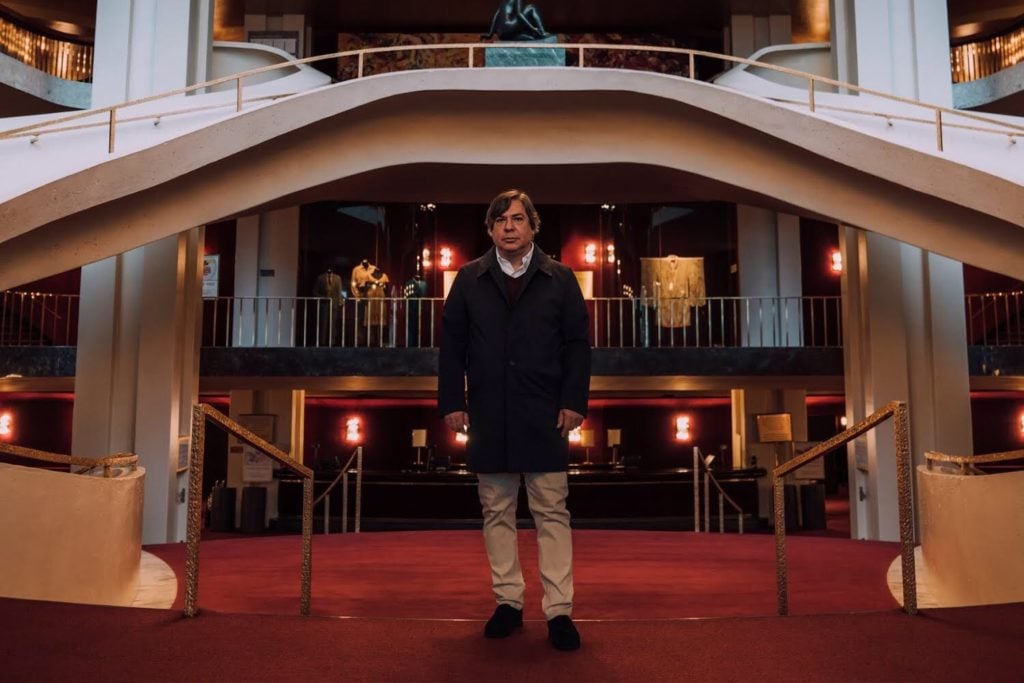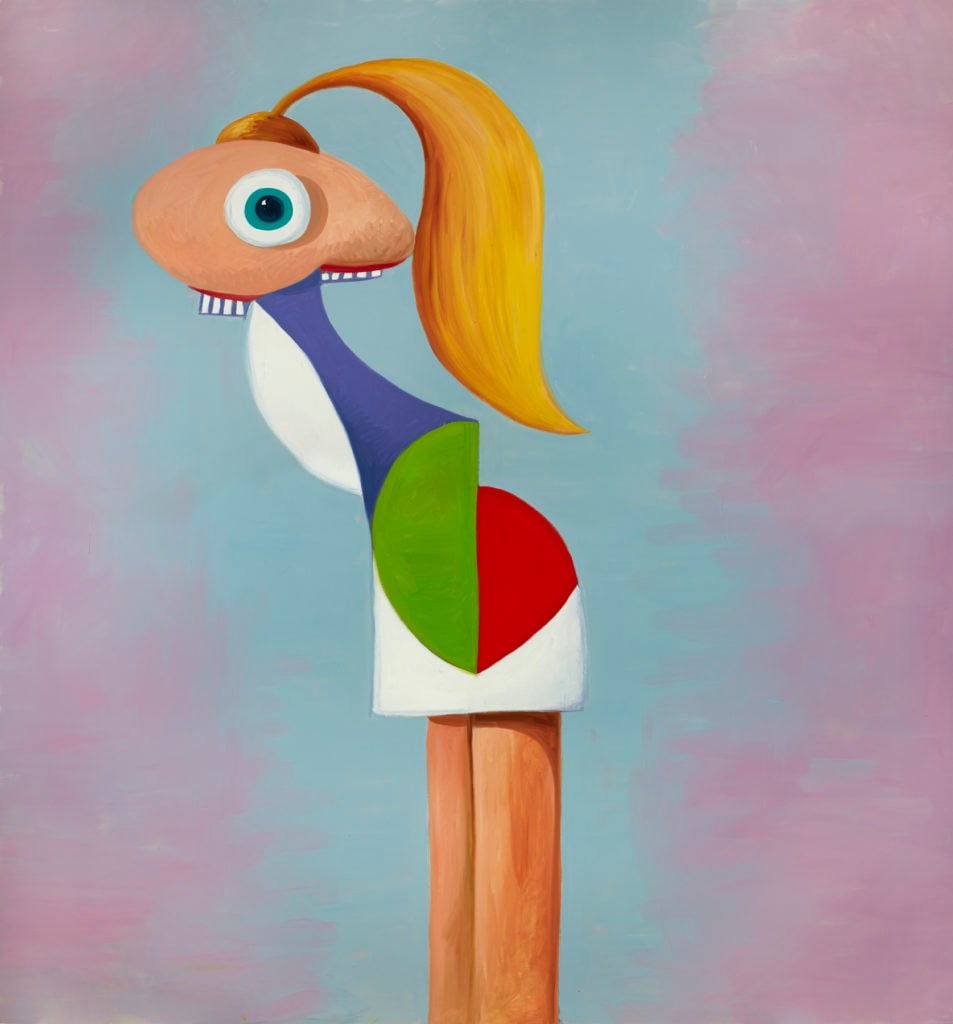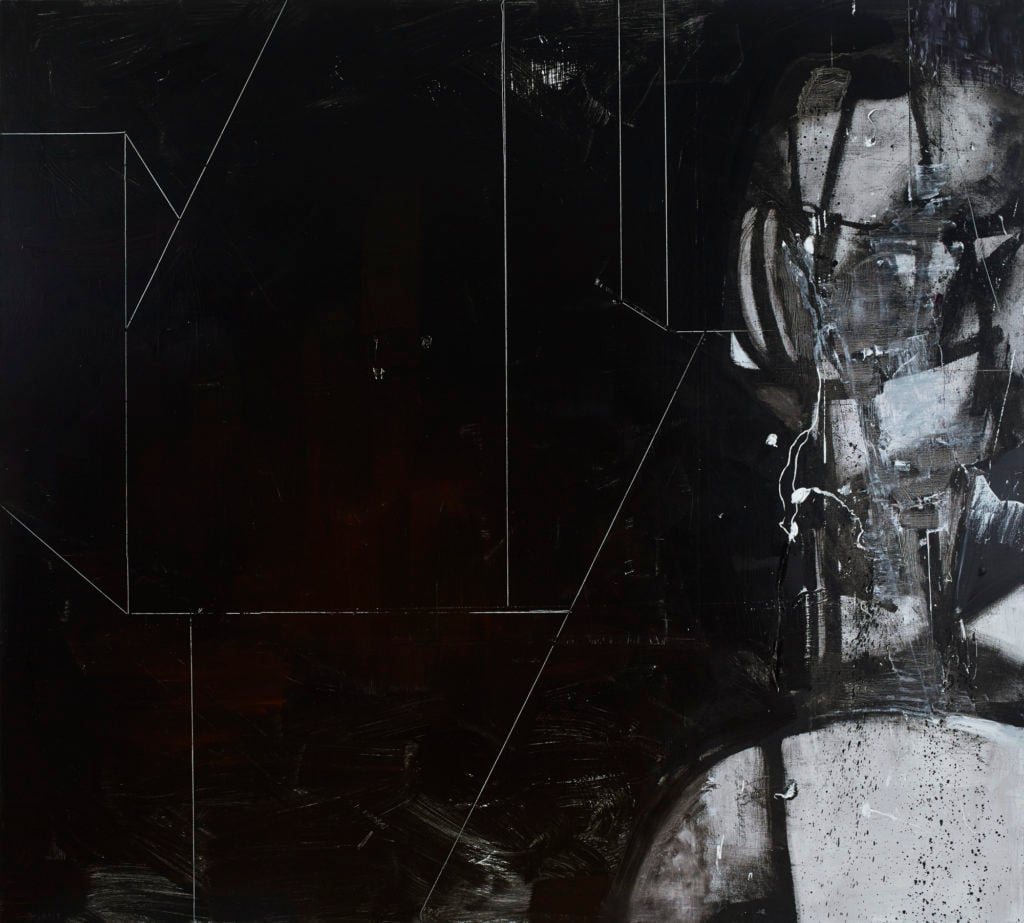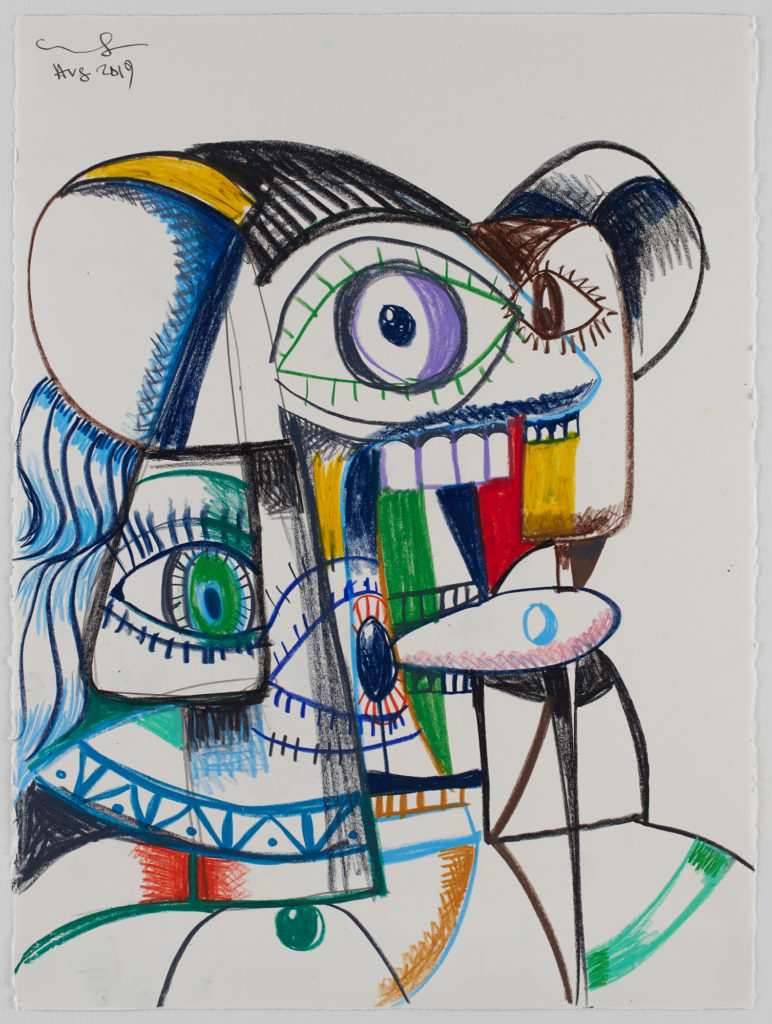People
‘Everything That Could Go Wrong, Did Go Wrong’: George Condo on the Difficult Path to His Most Personal Exhibition to Date
The painter's newest works are introspective and ponderous.

The painter's newest works are introspective and ponderous.

Pac Pobric

Late last month, at his home on New York’s Upper East Side, the painter George Condo hosted an evening recital by the violinist Leila Josefowicz and her longtime collaborator, pianist John Novacek. The elaborate affair, arranged for 61 guests, included a catered dinner, performances of pieces by György Kurtág and Igor Stravinsky, and, “as always, great wine,” as it said on the invitation. Among the guests were Vija Celmins, Max Hollein, Calvin Tomkins, and Dodie Kazanjian. But the party almost never happened.
Just hours before the crowds were due to arrive at 7 p.m., the power in Condo’s home went out, and the increasingly anxious host watched as the clock ticked forward without resolution. “At 3:30, it started to get darker and darker, and whether the lights would come on was a big question,” Condo told me the next day, in his studio on Gramercy Park, where we sat on two mismatched chairs beside a table splattered with oil paint.
“It was like we had 20 minutes to decide whether to call 61 people to say, ‘Sorry, but we had a power failure,’ knowing that in 15 minutes, it would probably start working.” Condo spent the afternoon sweating out his dwindling options when—by the grace of the power supply—the lights came back on. And with it came an enormous burst of heat, pumped up through the building’s radiator system, which presented its own problem.
“The performers loved it because they like to keep their hands warm,” he said. “But I was just melting. And the stress of it all was too much. Because all I wanted was for it to be right. But everything that could go wrong, did go wrong. Except for the performance, which was fabulous.”

George Condo, Fashion Model (2019). Courtesy of Skarstedt.
As part of their recital, Josefowicz and Novacek performed Maurice Ravel’s Sonata No. 2 in G major, a three-part movement that ends, appropriately, in a maddening dash to the finish, with the pianist and violinist racing to settle the score. Which is pretty much how Condo works, too. By the time the New Museum in New York hosted “Mental States,” a 30-year survey of his paintings, sculptures, and drawings, in 2011, curators had around 2,000 works to choose from. When I asked him how he was able to work so prodigiously, having averaged more than 65 paintings per year in that period, he shrugged.
“One of the things I have to say that’s puzzling to me is artists who work slowly,” he said. “I find that really bizarre. Because it just doesn’t take that long to put a line down on a canvas. I don’t want to sit back and say, ‘Wow, it’s going to take me 15 minutes to decide if a line should go here or there.’ The quicker you work, the better.”
Condo has mostly maintained his momentum. His current show at Skarstedt gallery in New York includes 25 works, all of them made in 2019. This year, he also made new pictures for the Venice Biennale and for a solo exhibition at Sprüth Magers in Los Angeles, and he completed his first public sculpture, a gold-leaf-covered Cubist head, at Lincoln Center in New York.
“If I make a parallel with music, let’s say you have an incredibly fast piece,” Condo said. “Take one of the Bach violin partitas that’s just really ripping. You can’t miss a note, but you’ve got to play it at an accelerated speed. The amount of time it takes to work on each phrase, pretty soon that becomes muscle memory. And pretty soon you can up the tempo. With painting, after doing it for 40 years, I feel like it’s all muscle memory.”
The speed at which Condo works has something to do with the furious pace of New York, where he has lived, on and off, since 1979. He moved to the city from Boston after a chance encounter with Jean-Michel Basquiat that year at a club called Tier 3. The two became close friends, and Condo found a job at a print shop run by Rupert Smith, who produced works for Andy Warhol. Condo met the Pop artist three times: twice while delivering proofs for approval, and a third time in the studio of Keith Haring, where Condo was working on a mural-sized painting. Upon arriving at Haring’s and seeing Condo at work on the picture, Warhol asked: “Do you just go up to a painting and do whatever you like?” Condo told him yes, and Warhol replied: “Gee, I could never do that.”

Pushed to the Edge (2019) was made after Condo underwent heart surgery late in the summer. Courtesy of Skarstedt.
For those who have kept up with Condo, his current Skarstedt exhibition mostly fulfills expectations. Among the pictures are a drawing of a physically stunted butler named Willy with an enlarged eye and a separated left shoulder; a crayon-on-paper image of a deranged clown with a smeared face plopped atop a billowing Elizabethan collar; and an enormous painting of an overly delicate blonde fashion model with one eye and two sets of teeth.
These are perverse pictures of ugly people, done in a style palatable to anyone with even the slightest taste for Modern painting. And despite Condo’s sometimes aggressive scrawl—his fierce depictions of women with broken teeth and enormous breasts owe quite a bit to Willem de Kooning—his work is appropriately reverential of tradition, and thereby reassuring and comely. Even if in strange and demented ways.
Yet tucked away on the gallery’s second floor is a suite of five black paintings that seem altogether more ponderous. One of them is titled Pushed to the Edge; another is called The Heart Attack. And in each one, a truncated figure, outlined in faded white pigment that barely emerges from a pitch-black background, is shoved off to the far side of the scene, as if it’s being forced into oblivion.
The works were made in the late summer, just after Condo began experiencing chest pains. “I’ve always seen heart attacks on TV and in movies and read about them,” he said. “So what happened with me, I thought, ‘It doesn’t feel like the way I’ve seen it. It just feels normal.’” Three days later, the pain had still not subsided, and he went to the hospital and was told that his timing was very fortunate. At this point, doctors said, he wouldn’t even be able to survive the exertion involved in a cardiac stress test.

George Condo, Multiple Portraits (2019). Courtesy of Skarstedt.
To assess their options, doctors took internal photographs of Condo’s heart and recommended surgery to insert two stents. After the procedure, Condo was released with clear orders to avoid heavy lifting and strenuous activity. That made painting pictures like those of his fashion model, which is an overwhelming 11 feet tall, impossible. So he put away his ladder and reflected on the dark photographs doctors had shown him of his chest cavity, which found their way into the black paintings.
The first work in the series, The Consequence of Random Perspectives, in which a man’s head evaporates into mist, came to him easily. “Let me deconstruct for a change, and take everything out of my paintings that anyone could possibly recognize,” he remembers thinking. But the further he took the idea, and the more his figures began to disintegrate, the harder it became. The artist worried that the paintings were too understated, that there was too little painterly articulation, that his signature style had evaporated too fully. He was anxious that if he wasn’t painting people in the throes of psychological crisis, the paintings “wouldn’t be me,” he said.
“But maybe I don’t care about that so much anymore,” he said. “Maybe what I’m interested in is an internal dialogue with my own thoughts, and using the language of painting in a way that doesn’t involve a figure. That was the part that was exciting to me.”
Of course, as Condo later admitted, the figure never truly disappears from these works; it’s only ever in the process of dissolving into something else. But what struck me, upon revisiting the black paintings after meeting with the artist, was how peaceful dissolution could be. Compared with Condo’s often vicious depictions of agitated bankers and butlers, cardinals and nuns, clowns with shattered faces and all manners of unhinged men and women involved in unspeakable acts, these paintings are downright tranquil, no matter their implied violence. The figure in Pushed to the Edge, whose melted face is dripping down the surface of the picture plane, has a resigned, rather than unsettled, look in his single eye. His body is being reconfigured, and soon, he will be another being entirely. What will become of him?
The painting reminded me of something Condo said back in his studio. “Whatever you have in your mind needs to be transcribed before you lose the image. Before it just fades off and morphs into something else.”